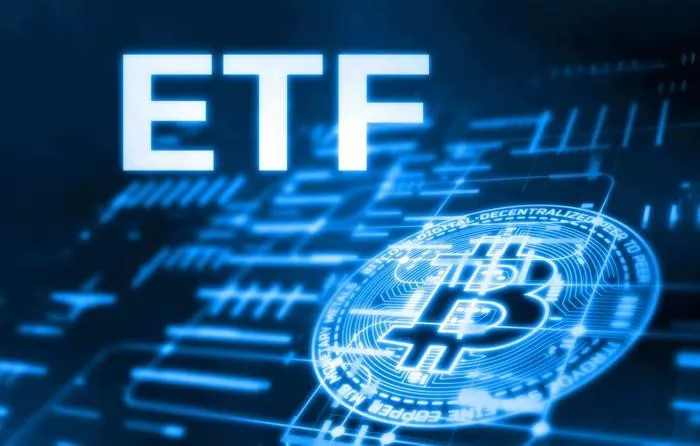Exchange-Traded Funds (ETFs) have revolutionized the way investors approach the financial markets. These investment vehicles offer diversified exposure to various asset classes, making them an attractive option for both novice and seasoned investors. Among the plethora of ETF options available, two primary categories stand out: Active ETFs and Passive ETFs. In this comprehensive guide, we delve into the nuances of these two types of ETFs, exploring their strategies, performance, costs, transparency, tax efficiency, and investor considerations.
Definition of ETFs
ETFs are investment funds that trade on stock exchanges, similar to individual stocks. They typically hold a diversified portfolio of assets, such as stocks, bonds, commodities, or a combination thereof. Investors buy and sell ETF shares throughout the trading day at market prices, providing liquidity and flexibility.
Active ETFs vs. Passive ETFs
Definition:
Active ETFs are managed by portfolio managers who actively make investment decisions with the goal of outperforming the market or a specific benchmark. These managers employ various strategies, including fundamental analysis, technical analysis, and market timing, to achieve their objectives.
Passive ETFs, on the other hand, aim to replicate the performance of a specific index or benchmark. Rather than actively selecting investments, passive ETFs hold the same securities in the same proportions as the underlying index, thereby offering investors exposure to broad market movements.
Investment Strategy:
Active ETFs employ dynamic investment strategies, allowing fund managers to adjust portfolio holdings in response to market conditions, economic trends, and company-specific developments. These funds may seek to capitalize on undervalued securities, exploit short-term trading opportunities, or hedge against potential risks.
Passive ETFs, in contrast, follow a buy-and-hold approach, seeking to mirror the performance of their underlying indices. These funds typically have lower portfolio turnover and may rebalance periodically to maintain alignment with the index.
Performance and Costs
Historical Performance:
The performance of active and passive ETFs can vary significantly depending on market conditions, fund management expertise, and investment objectives. While some actively managed funds may outperform their benchmarks, others may underperform, leading to a wide dispersion of returns.
Passive ETFs, by design, aim to match the performance of their underlying indices, minus fees and tracking error. Over the long term, passive ETFs have historically delivered competitive returns relative to actively managed funds, particularly in efficient markets.
Costs:
Active ETFs typically incur higher management fees and expenses compared to passive ETFs. These fees compensate portfolio managers for their expertise and active management efforts. Additionally, active trading within the fund may lead to higher transaction costs and tax implications for investors.
Passive ETFs, on the other hand, tend to have lower expense ratios since they require less active management. Investors benefit from reduced costs, which can have a significant impact on long-term returns, especially when compounded over time.
Transparency and Flexibility
Transparency:
Passive ETFs are known for their transparency, as they disclose their holdings regularly, allowing investors to assess portfolio composition and performance. This transparency enables investors to make informed decisions and monitor their investments effectively.
Active ETFs may exhibit varying levels of transparency, depending on the fund’s disclosure practices. While some actively managed funds provide regular updates on portfolio holdings and investment strategies, others may disclose information less frequently, potentially limiting investor visibility into fund operations.
Flexibility:
Active ETFs offer greater flexibility to deviate from their benchmarks, allowing portfolio managers to capitalize on investment opportunities and adjust to changing market conditions. This flexibility may result in outperformance during periods of market volatility or inefficiency but also entails higher levels of active risk.
Passive ETFs adhere to a more rigid structure, closely tracking their underlying indices with minimal deviation. While this approach provides investors with consistent exposure to broad market movements, it may limit the fund’s ability to outperform during certain market environments.
Tax Efficiency
Tax Implications:
Active ETFs typically exhibit higher portfolio turnover than passive ETFs, which can lead to increased capital gains distributions and tax liabilities for investors. Frequent buying and selling of securities within the fund may trigger capital gains taxes, reducing after-tax returns for investors.
Passive ETFs generally have lower portfolio turnover, resulting in fewer taxable events and potentially greater tax efficiency. By minimizing capital gains distributions, passive ETFs help investors retain more of their investment gains over time, enhancing overall tax-adjusted returns.
Investor Considerations
Factors to Consider:
When choosing between active and passive ETFs, investors should consider several factors, including investment goals, risk tolerance, time horizon, and personal preferences. Active ETFs may appeal to investors seeking potentially higher returns and active management expertise, while passive ETFs offer low-cost, diversified exposure to broad market indices.
Investors should assess their individual financial objectives and weigh the trade-offs between active and passive strategies. Additionally, investors may consider diversifying their portfolios with a combination of both active and passive ETFs to mitigate risk and optimize returns.
Regulatory Considerations
Regulatory Requirements:
Both active and passive ETFs are subject to regulatory oversight by government agencies such as the Securities and Exchange Commission (SEC). Regulatory requirements may vary depending on fund structure, investment objectives, and distribution channels. Investors should familiarize themselves with relevant regulations and disclosures before investing in ETFs.
Conclusion
In conclusion, active ETFs and passive ETFs represent distinct investment approaches with unique characteristics and considerations. Active ETFs offer the potential for outperformance through dynamic management strategies but entail higher costs and active risk. Passive ETFs provide low-cost, diversified exposure to market indices with greater transparency and tax efficiency but may lag during periods of market inefficiency.
When selecting ETFs, investors should carefully evaluate their investment objectives, risk tolerance, and time horizon, weighing the trade-offs between active and passive strategies. By understanding the differences between these two approaches and conducting thorough due diligence, investors can make informed decisions to optimize their investment portfolios for long-term success.


